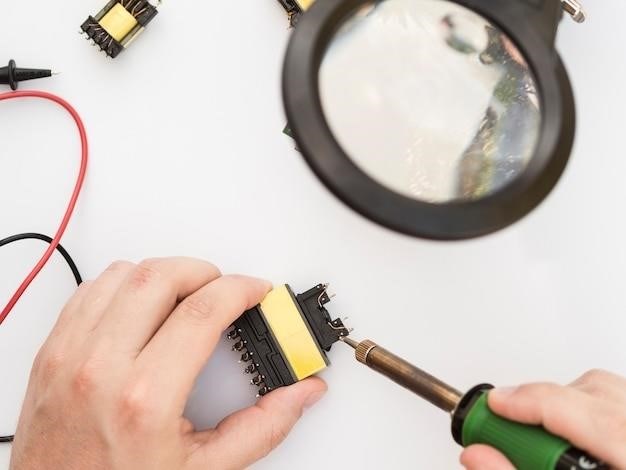Barbarian Guide⁚ Pathfinder
The Barbarian is a martial class known for its raw power and ferocity. They excel in close combat, relying on rage to enhance their physical capabilities. This guide will cover everything you need to know about playing a Barbarian in Pathfinder, from their abilities and role to build suggestions and effective strategies.
Introduction
In the world of Pathfinder, the Barbarian embodies the primal fury of nature, a warrior who channels their rage into unmatched physical prowess. They are a class built for close combat, excelling in melee attacks and dealing devastating blows. This guide delves into the depths of the Barbarian class, exploring their unique abilities, their role in a party, and the various options available for crafting a powerful and effective Barbarian.

The Barbarian’s strength lies in their ability to enter a state of frenzied rage, granting them temporary boosts to their physical attributes and enhancing their combat capabilities. However, this rage comes at a cost, as it also imposes penalties on certain abilities. Despite this trade-off, the Barbarian remains a formidable force on the battlefield, capable of tearing through enemies with their raw power.
This guide will provide a comprehensive overview of the Barbarian class, covering everything from their core mechanics to advanced strategies. Whether you are a seasoned Pathfinder player or a newcomer to the game, this guide will equip you with the knowledge and insights needed to unleash the full potential of the Barbarian.
Barbarian Abilities and Role
Barbarians are defined by their unique rage ability, a powerful state that enhances their physical capabilities and fuels their combat prowess. While raging, Barbarians gain bonuses to attack and damage rolls, as well as temporary hit points. This rage empowers them to become relentless and unstoppable forces on the battlefield.
Their primary role in a party is that of a Striker and Defender. They excel at dealing massive damage in close combat, while their high hit points and rage-fueled defenses allow them to withstand heavy blows. However, Barbarians are often described as “glass cannons” due to their vulnerability outside of rage.
Barbarians are proficient with all simple and martial weapons, light and medium armor, and shields. They also possess the Fast Movement ability, which increases their land speed while unburdened. This makes them incredibly mobile, capable of quickly closing the distance with enemies or escaping from danger.
Races for Barbarians
Choosing the right race for your Barbarian can significantly impact their effectiveness and thematic appeal. Some races offer natural bonuses that complement the Barbarian’s strengths, while others provide unique abilities that enhance their combat prowess.
The Half-Orc race is a popular choice for Barbarians due to their inherent ferocity and damage-boosting trait, “Mindlessly Cruel.” This trait grants them a bonus to damage rolls while raging, making them even more devastating in combat. The Half-Orc’s natural strength and resilience also make them well-suited to the Barbarian’s role as a front-line fighter.
Other races, such as the Orc, Dwarf, and Human, also offer strong base stats and racial abilities that synergize with the Barbarian’s strengths. These races are often chosen for their durability and combat prowess, making them ideal choices for players who want to embrace the Barbarian’s role as a fierce warrior.
Rage Powers
Rage Powers are the Barbarian’s unique abilities, granting them a variety of combat-enhancing effects while they are raging. These powers are acquired at specific levels and offer a wide range of options for customizing your Barbarian’s fighting style.
Some Rage Powers provide temporary bonuses to damage, attack rolls, or saves, while others grant unique abilities like increased movement speed, the ability to ignore certain conditions, or even the power to intimidate foes. The choice of Rage Powers can drastically alter your Barbarian’s role in combat, allowing you to specialize in areas like damage output, defense, or crowd control.
The selection of Rage Powers is a key aspect of Barbarian character development. It allows you to tailor your character’s combat style and create a unique and effective build, whether you prefer to be a ferocious damage dealer, a durable tank, or a versatile fighter with a mix of offensive and defensive abilities.
Totem Rage Powers
Totem Rage Powers are a special category of Rage Powers that provide themed abilities based on a chosen totem animal. Each totem grants unique benefits that enhance the Barbarian’s combat prowess in a specific way. For example, the Bear Totem grants increased Strength and damage, while the Eagle Totem provides improved mobility and awareness.
Choosing a totem animal is an important decision as it shapes your Barbarian’s combat style and strengths. The Bear Totem makes you a ferocious damage dealer, while the Eagle Totem allows for more tactical maneuvers and flanking attacks. The choice depends on your preferred playstyle and the needs of your party.
Totem Rage Powers offer a unique way to specialize your Barbarian, adding a layer of thematic depth and customization to their fighting style. They represent a powerful choice for those who want to embrace the primal nature of their rage and become a true embodiment of their chosen totem animal.
Other Rage Powers
Beyond the thematic powers offered by totems, Barbarians have access to a diverse array of Rage Powers that enhance their combat capabilities in various ways. These powers provide valuable tactical options and allow for greater customization of your Barbarian’s role in combat.
Some Rage Powers focus on increasing damage output, such as “Brutal Critical” which grants a bonus to critical hit damage, or “Power Attack” which allows for a trade-off between attack bonus and damage bonus. Other Rage Powers enhance survivability, like “Furious Defense” which provides temporary hit points, or “Indomitable Might” which grants a bonus to saving throws.
The choice of Rage Powers is crucial for building a successful Barbarian. Consider your preferred playstyle and the needs of your party when selecting these powers. A damage-focused Barbarian might prioritize offensive powers, while a more supportive Barbarian might choose powers that enhance their survivability or the effectiveness of their allies.
Feats and Traits
Feats and Traits provide additional avenues for customizing your Barbarian and enhancing their capabilities. Feats are powerful abilities that can be taken at certain level milestones, allowing for significant improvements in combat prowess, skill usage, or other aspects of the character.
For Barbarians, feats often focus on enhancing their offensive capabilities, such as Power Attack which allows for a trade-off between attack bonus and damage bonus, or Weapon Focus which grants a bonus to attack rolls with a specific weapon type. Feats can also improve survivability, such as Toughness which grants extra hit points, or Improved Initiative which provides a bonus to initiative rolls.
Traits are smaller, more focused abilities that can be chosen from a variety of options, often granting small bonuses or unique abilities. Traits can provide a variety of benefits, such as damage bonuses, improved defenses, or even unique abilities that fit thematically with your Barbarian’s background or personality.
Archetypes
Archetypes offer alternative paths for Barbarian development, providing unique abilities, features, and playstyles. These archetypes diverge from the traditional Barbarian, allowing for greater customization and specialization within the class.
The Invulnerability Archetype focuses on resilience and defense. These Barbarians gain an increasing amount of damage reduction as they level, making them incredibly tough to kill. This archetype emphasizes a defensive role within the party, protecting allies from harm and standing firm against enemy assaults.
The Animal Barbarian archetype embraces a primal connection to the natural world. These Barbarians gain the ability to transform into a specific animal, gaining their abilities and characteristics. They can choose from a variety of animal forms, each with unique benefits, allowing for diverse playstyles and tactical options.
Invulnerability
The Invulnerability archetype is a powerful option for Barbarians who want to become a true bastion of defense. This archetype sacrifices some of the traditional Barbarian’s offensive prowess in exchange for an incredible resistance to damage.
The Invulnerability Barbarian gains Damage Reduction (DR) at level 2, which increases with each level. This DR makes them incredibly difficult to kill, allowing them to withstand even the most powerful attacks. Furthermore, the Invulnerability Barbarian gains a modest resistance to either cold or fire damage, providing additional protection against specific threats.
This archetype excels in situations where sustained damage is a major concern. They can stand firm against enemy assaults, allowing allies to focus on dealing damage or casting spells. The Invulnerability Barbarian is a true tank, absorbing damage and protecting their companions from harm.
Animal Barbarian
The Animal Barbarian archetype embodies the primal fury of nature, drawing strength and ferocity from the animal world. They gain a strong connection to a specific animal type, granting them unique abilities and enhancing their innate savagery. The Animal Barbarian embraces the raw power and instincts of nature, becoming a formidable force in combat.
This archetype offers a powerful blend of offense and defense. While they may lack the sheer damage output of other Barbarian archetypes, their increased AC, natural armor, and animal-themed rage powers make them incredibly resilient and adaptable in combat. The Animal Barbarian thrives in close-quarters combat, using their natural instincts and enhanced strength to overwhelm their foes.
The Animal Barbarian offers a unique and engaging playstyle, emphasizing a connection with nature and a ferocious primal spirit. They are a force to be reckoned with, blending the ferocity of a Barbarian with the adaptability and resilience of their chosen animal companion.
Barbarian Builds
Barbarians offer a variety of build options, each catering to different playstyles and combat strategies. From focusing on raw damage output to emphasizing resilience and defense, the Barbarian’s versatility allows players to tailor their character to their preferred approach. These builds explore the Barbarian’s strengths, utilizing feats, rage powers, and archetypes to create powerful and effective characters.
The “Whirlwind Twisters Barbarian” build, for example, leverages the Barbarian’s mobility and rage powers to create a whirlwind of chaos and destruction. It focuses on utilizing whirlwind attacks and other movement-based abilities to overwhelm enemies and deliver devastating blows. Alternatively, the “Frenzy Thorns Barbarian” embraces a more defensive approach, utilizing rage powers and feats to become a formidable obstacle, punishing enemies who dare to engage them.
These are just a few examples of the many Barbarian builds available in Pathfinder. Players can experiment with different combinations of feats, rage powers, and archetypes to discover the build that best suits their playstyle and desired role in the party.
Whirlwind Twisters Barbarian
The Whirlwind Twisters Barbarian is a dynamic and aggressive build that thrives on chaos and movement. This build capitalizes on the Barbarian’s natural ferocity and rage powers to create a whirlwind of destruction, overwhelming enemies with relentless attacks and strategic maneuvering. It leverages the Barbarian’s mobility to its full potential, utilizing feats and rage powers that enhance movement speed and attack opportunities.
A core element of this build is the “Whirlwind Attack” feat, which allows the Barbarian to strike multiple enemies in a single attack. Combined with rage powers that grant additional movement speed, this build becomes a whirlwind of chaos, moving through the battlefield, striking enemies from all angles. Additionally, feats like “Improved Whirlwind Attack” and “Greater Whirlwind Attack” amplify the effectiveness of this build, allowing the Barbarian to hit even more enemies with each attack.
The Whirlwind Twisters Barbarian is a thrilling and effective build for players who enjoy a fast-paced, aggressive playstyle. It excels in situations where there are multiple enemies, allowing the Barbarian to create a whirlwind of destruction and clear the battlefield with devastating speed.
Frenzy Thorns Barbarian
The Frenzy Thorns Barbarian is a brutal and unforgiving build that embraces the Barbarian’s primal ferocity and transforms it into a deadly, spiky whirlwind. This build focuses on maximizing damage output and using rage to enhance both offensive and defensive capabilities. The Barbarian’s rage becomes a shield as well as a weapon, turning them into a thorn-covered, enraged beast that can withstand heavy blows while dishing out devastating punishment.
Key to this build is the “Frenzy” rage power, which grants the Barbarian increased damage but also penalizes their AC. To counteract this, the build utilizes armor and feats that enhance their natural defenses. The “Armor Spikes” feat is a cornerstone of this build, adding spikes to the Barbarian’s armor that inflict damage to any enemy who attacks them in melee. Coupled with rage powers that grant damage reduction and temporary hit points, the Frenzy Thorns Barbarian becomes a formidable defensive force.
The Frenzy Thorns Barbarian is a powerful and aggressive build for players who enjoy a close-quarters combat style. It excels in situations where the Barbarian is surrounded by enemies, turning their rage into a shield and their attacks into a punishing barrage of thorns and fury.
Barbarian in Pathfinder⁚ Wrath of the Righteous
In Pathfinder⁚ Wrath of the Righteous, the Barbarian takes on a new dimension, offering a unique blend of raw power and strategic depth. While the core mechanics of the Barbarian remain the same, the game’s unique setting and challenges provide new opportunities for customization and playstyle. The game’s branching narrative paths and a plethora of mythic paths, each with unique abilities and powers, allow for diverse builds and playstyles, making the Barbarian a versatile and engaging character in Wrath of the Righteous.
One notable aspect is the increased emphasis on the Barbarian’s ability to be a tank, a role often associated with other classes. With the right build and rage powers, the Barbarian can become a formidable front-line fighter, soaking up damage and protecting their allies. The game’s abundance of unique items and equipment, combined with the ability to customize the Barbarian’s rage powers, allows for greater flexibility and adaptation to different situations.
Pathfinder⁚ Wrath of the Righteous offers a dynamic and exciting platform for Barbarian players, allowing for greater depth and customization in a challenging and engaging world. From brutal damage dealers to resilient tanks, the Barbarian class finds a new level of expression in this acclaimed adventure.
















